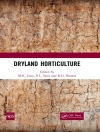Drawing upon a wealth of past research and results, this book provides a comprehensive summary of state-of-the-art methods for empirical modeling of forest trees and stands. It opens by describing methods for quantifying individual trees, progresses to a thorough coverage of whole-stand, size-class and individual-tree approaches for modeling forest stand dynamics, growth and yield, moves on to methods for incorporating response to silvicultural treatments and wood quality characteristics in forest growth and yield models, and concludes with a discussion on evaluating and implementing growth and yield models. Ideal for use in graduate-level forestry courses, this book also provides ready access to a plethora of reference material for researchers working in growth and yield modeling.
Tabla de materias
1. Introduction.- 2. Tree Form and Stem Taper.- 3. Tree-stem Volume Equations.- 4. Tree Weight and Biomass Estimation.- 5. Quantifying Tree Crowns.- 6. Growth Functions.- 7. Evaluating Site Quality.- 8. Quantifying Stand Density.- 9. Indices of Individual-tree Competition.- 10. Modeling Forest Stand Development.- 11. Whole-stand Models for Even-aged Stands.- 12. Diameter-distribution Models for Even-aged Stands.- 13. Size-class Models for Even-aged Stands.- 14. Individual-tree Models for Even-aged Stands.- 15. Growth and Yield Models for Uneven-aged Stands.- 16. Modeling Response to Silvicultural Treatments.- 17. Modeling Wood Characteristics.- 18. Model Implementation and Evaluation.-
Sobre el autor
Dr. Harold Burkhart, University Distinguished Professor Department of Forest Resources and Environmental Conservation, College of Natural Resources and Environment, Virginia Tech University, Blacksburg, VA 24061, USA Interest Areas: Modeling forest stand dynamics, growth and yield; applying quantitative analysis techniques to forestry problems. B.S., Oklahoma State University (1965) M.S., University of Georgia (1967) Ph.D., University of Georgia (1969) Current research project Cooperative Research Program in Growth and Yield of Managed Stands of Loblolly Pine (Twelve industrial forestry firms plus Virginia Department of Forest Resources and Environmental Conservation and USDA Forest Service, 1979-present): The objective of this Cooperative is to develop loblolly pine tree growth and stand development models sufficiently flexible to account for the effects of intensive cultural practices, with output sufficiently detailed to allow for analyses of a full range of utilization options. The Cooperative maintains three large field studies: (1) a set of designed spacing trials, (2) a region-wide set of growth plots in intensively managed plantations, and (3) two pruning experiments and is part of the NSF Center for Advanced Forestry Systems.












